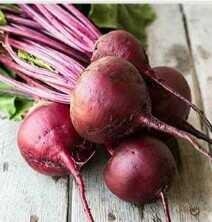
There is a virtual cornucopia of sustenances, herbs, and different types of food that are promptly accessible to bring down hypertension, or hypertension, normally. Organic products, vegetables, and nuts are only a modest bunch of the sound things you can eat to advance solid blood stream. Taking in the advantages of these sustenances and figuring out which ones are best for your eating routine may bring down your pulse and keep up circulatory wellbeing.
The Importance of Your Blood
"Blood is an exceptionally extraordinary juice," composed the celebrated eighteenth century creator Johann Wolfgang von Goethe, however it is more than simply "uncommon." Blood is the fuel that manages human and creature life. It empowers the body to remain alive via conveying oxygen and supplements to living cells, taking without end squander items, and transporting insusceptible cells to battle diseases. The normal human grown-up body contains in excess of six quarts of blood which goes through the veins and heart. This fundamental substance additionally incorporates platelets that can shape a plug in harmed veins, forestalling blood misfortune. As extraordinary as this "juice" is, it can likewise build up an undesirable measure of weight in your body.
What Is Blood Pressure?
Circulatory strain is the weight your blood applies to the dividers of your veins as it streams. Your heart is a muscle that functions as a pump to push your blood through these vessels. Checking your pulse is one of the principal errands performed at whatever point you visit your social insurance proficient.
Since it's difficult to decide circulatory strain only by sight or tuning in to the heart, an oscillatory sleeve is wrapped around the upper arm and expanded until the point that blood stream is confined. As the weight gradually diminishes, the sleeve can distinguish vibrations. It quantifies your systolic perusing when the weight dies down sufficiently only for the vein to compel blood through. The sleeve takes your diastolic perusing when the weight diminishes further and your blood moves unreservedly through your supply route with its ordinary pulses.
What Is High Blood Pressure and What Is Normal Blood Pressure?
Sound or typical pulse is beneath 120/80– 120 being the systolic level and 80 being the diastolic level. The vast majority have a tendency to be appropriate around these levels or marginally higher. The systolic level is the most noteworthy your circulatory strain achieves when your heart thumps, and the diastolic is the least it comes to as your heart unwinds. Now and then these levels get too high because of difficulties originating from eat less, weight, action levels, liquor, smoking, and stress.
There are shifting degrees of circulatory strain estimated in five categories.
Ordinary: Systolic under 120 and diastolic under 80
Lifted: Systolic between 120-129 and diastolic under 80
Stage 1 hypertension: Systolic between 130-139 or diastolic between 80-89
Stage 2 hypertension: Systolic no less than 140 or diastolic no less than 90
Hypertensive emergency: Systolic more than 180 or diastolic more than 120
Why Is High Blood Pressure Bad for You?
Hypertension makes hurt your veins. At the point when blood pushes through your supply routes with an excess of power, harm happens and empowers fat and calcium to develop. This procedure in the end makes blockage happen as plaque-advancing irritation of the supply route dividers. Otherwise called stopped up veins, or atherosclerosis, this development may cause blood clumps to shape. These coagulations can some of the time loosen up and discover their way to the heart or lungs bringing about discouraged blood stream to these organs.
Thanks for spreading the awareness.....it's really beneficial
Downvoting a post can decrease pending rewards and make it less visible. Common reasons:
Submit